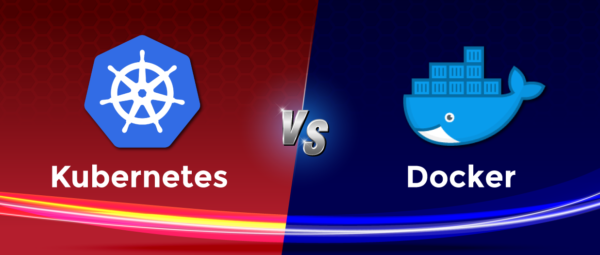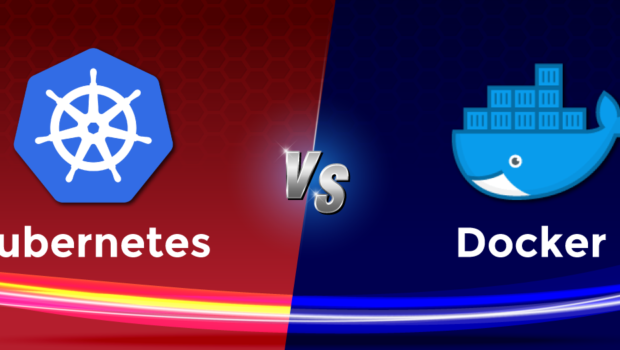Kubernetes vs Docker in 2020
Kubernetes vs. Docker ”is an expression you hear more and more today, while Kubernetes is becoming more and more popular as a container orchestration solution.
However, “Kubernetes vs. Docker ”is also a somewhat misleading phrase. When we break it down, these words do not mean what many people claim to do, because Docker and Kubernetes are not direct competitors. Docker is a container platform, and Kubernetes is a container orchestrator for container platforms like Docker.
This post is intended to clarify a common confusion around Kubernetes and Docker and to explain what people really mean when they talk about “Docker vs. Docker. Kubernetes”.

Increased containerization and Docker
It’s impossible to talk about Docker without first exploring the containers. Containers solve a critical problem in the life of application development. When developers write code, they work in their local development environment. When I’m ready to move that code into production, that’s the problem. The code that worked perfectly on your machine does not work in production. The reasons for this are varied; Different operating systems, different dependencies, different libraries.
Containers have solved this important portability issue that allows you to detach code from the core infrastructure on which it is running. Developers can pack their app, including all the containers and libraries it needs to work properly, into a small container image. In production, that container can be run on any computer equipped with a sintering platform.
The advantages of containers
In addition to solving the great portability challenge, containers and container platforms offer many advantages over traditional virtualization.
Containers have an extremely small footprint. The container only requires the application and a definition of all the containers and libraries it needs to run. Unlike virtual machines that have a full copy of a guest operating system, container isolation is done at the kernel level without the need for a guest operating system. In addition, libraries can be in containers, eliminating the need for 10 copies of the same library on a server, saving more space. If I have 3 applications with node and express operation, I don’t have to have 3 node and express instances, these applications can share those containers and libraries. Allowing applications to be embedded in standalone environments allows for faster deployments, greater parity between development environments, and infinite scalability.
What is Docker?
Docker is currently the most popular container platform. Docker appeared on the market at the right time and was open source from the beginning, which probably led to its current position in the market. 30% of companies currently use Docker in the AWS environment and this number continues to grow.
When most people talk about Docker, they talk about Docker Engine, the runtime that allows you to create and run containers. But before you can run a Docker container, they must be created, starting with a Docker file. The Docker file defines everything that is needed to run the image, including operating system network specifications and file locations. Now that you have a Docker file, you can create a Docker image, which is the portable static component that runs on the Docker engine. And if you don’t want to start from scratch, Docker also has a service called Docker Hub, where you can store and share images.
The need for orchestration systems
While Docker has offered an open standard for packaging and distributing applications in containers, a new problem has arisen. How would all these containers be coordinated and scheduled? How to update an application without problems without interrupting the service? How to monitor the status of an application, know when something is wrong and restart it without problems?
Solutions for orchestrating containers soon emerged. Kubernetes, Mesos and Docker Swarm are some of the most popular options to provide an abstraction for a group of cars to behave like a large car that is vital in a large-scale environment.
When most people talk about “Kubernetes vs. Docker ”, which really means“ Kubernetes vs. Docker Swarm ”. The latter is the native Docker grouping solution for Docker containers, which has the advantage of being tightly integrated into the Docker ecosystem and uses its own API. Like most programmers, Docker Swarm provides a way to manage a large number of containers distributed between server groups. Its filtering and scheduling system allows the selection of optimal nodes in a cluster for container distribution.
Kubernetes Training is the container orchestrator developed by Google that was donated by CNCF and is now open source. You have the advantage of many years of Google experience in container management. It is a complete system for automating the implementation, planning and scaling of containerized applications and supports many containerization tools, such as Docker.
For now, Kubernetes is the market leader and standardized environment for container orchestration and distributed application distribution. Kubernetes can run on a local or public cloud service, is highly modular, open source and has a vibrant community. Companies of all sizes are investing in it, and many cloud service providers offer Kubernetes as a service. Sumo Logic provides support for all orchestration technologies, including applications with Kubernetes technology.
How does Kubernetes work?
It’s easy to get lost in the details of Kubernetes, but in the end, what Kubernetes does is pretty simple. Cheryl Hung of CNCF describes Kubernetes as a control circuit. Indicates the appearance of your system (3 copies of the image of container a and 2 copies of the image of container b) and Kubernetes makes it possible. Kubernetes compares the desired state with the actual state and, if they are not the same, takes steps to correct it
Kubernetes architecture and components
Kubernetes is made up of several components that you do not know. All components communicate with each other through the API server. Each of these components performs its own function and then exposes the values that we can collect for further monitoring. We can divide the components into three main parts.
- Control plan: The master.
- Nodes: where bridges are programmed.
- Bridges: contains containers.
Control plan – Main node
The control plan is the orchestrator. Kubernetes is an orchestration platform, and the control plan simplifies this orchestration. In the control plan there are several components that facilitate such orchestration. Etcd for archiving, the API server for communication between components, the programmer who decides on which nodes the bridges should be run and the administrator of the controller, responsible for checking the current status regarding the desired status.
Knots
Nodes are the collective computing power of the Kubernetes cluster. This is where the containers are actually distributed for execution. Nodes are the physical infrastructure on which the application runs, the virtual machine server in your environment.
Pods
Bridges are the lowest level resource in the Kubernetes cluster. A bridge consists of one or more containers, but more often only one container. By defining the cluster, you set limits for the bridges that define what resources, CPU, and memory should be run. The scheduler uses this definition to decide which nodes bridges will be placed on. If there is more than one container on a boat, it is difficult to estimate the resources required and the programmer will not be able to position the pods correctly.
How does Kubernetes connect to Docker?
Kubernetes and Docker are de facto complete solutions for intelligently managing containerized applications and offering powerful capabilities, leading to some confusion. “Kubernetes” is now sometimes used as a shortcut for a full Kubernetes-based container environment. In fact, they are not directly comparable, they have different roots and they solve different things.
Docker is a platform and tool for creating, distributing and running Docker containers. It offers its own local grouping tool, which can be used to orchestrate and plan containers in car pools. Kubernetes is a Docker container orchestration system that is more extensive than Docker Swarm and aims to effectively coordinate groups of nodes on a production scale. It works around the concept of pods, which are programming units (and can contain one or more containers) in the Kubernetes ecosystem and are distributed among nodes to provide high availability. You can easily run a Docker build on a Kubernetes cluster, but Kubernetes itself is not a complete solution and should include custom plugins.
Kubernetes and Docker are fundamentally different technologies, but they work very well together and both simplify container management and deployment in a distributed architecture.
Can Docker be used without Kubernetes?
Docker is commonly used without Kubernetes, in fact this is the norm. While Kubernetes offers many advantages, it is notoriously complex and there are many scenarios in which the transformation heads of Kubernetes are not necessary or unwanted.
In development environments, it is common to use Docker without a container orchestrator such as Kubernetes. In production environments, the benefits of using a container orchestrator often do not outweigh the cost of additional complexity. In addition, many public cloud services, such as AWS, GCP, and Azure, offer some orchestration features that make it necessary to compensate for additional complexity.
Can you use Kubernetes without Docker?
Because Kubernetes is a container orchestrator, a container runtime is required to orchestrate. Kubernetes is most commonly used with Docker, but can also be used at any time the container is running. RunC, cryo-o, containerd are other container rolls that can be implemented with Kubernetes. The Cloud Native Computing Foundation (CNCF) maintains a rollout of approved containers on its ecosystem presentation page, and the Kubernetes documentation provides specific configuration instructions using ContainerD and CRI-O.
Conclusion
Docker is a progressive containerization platform appreciated by developers and used to provide software, especially microservice-based architecture applications. Using Docker as a standalone application is useful for software development and testing. Installing, configuring, and using Docker is fairly straightforward. If you need to deploy an application in the production environment, it is preferable to use a cluster to run the containers.
















